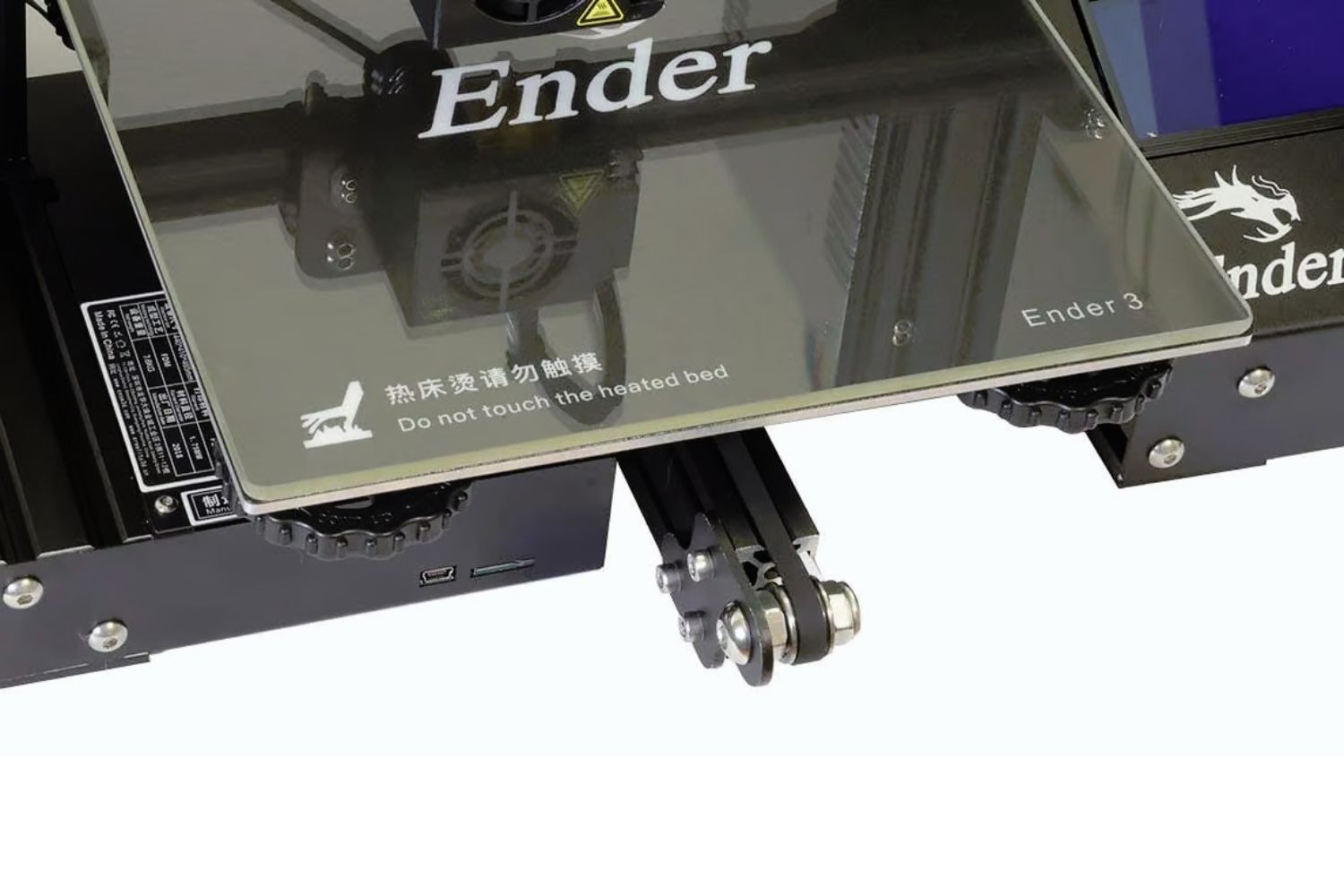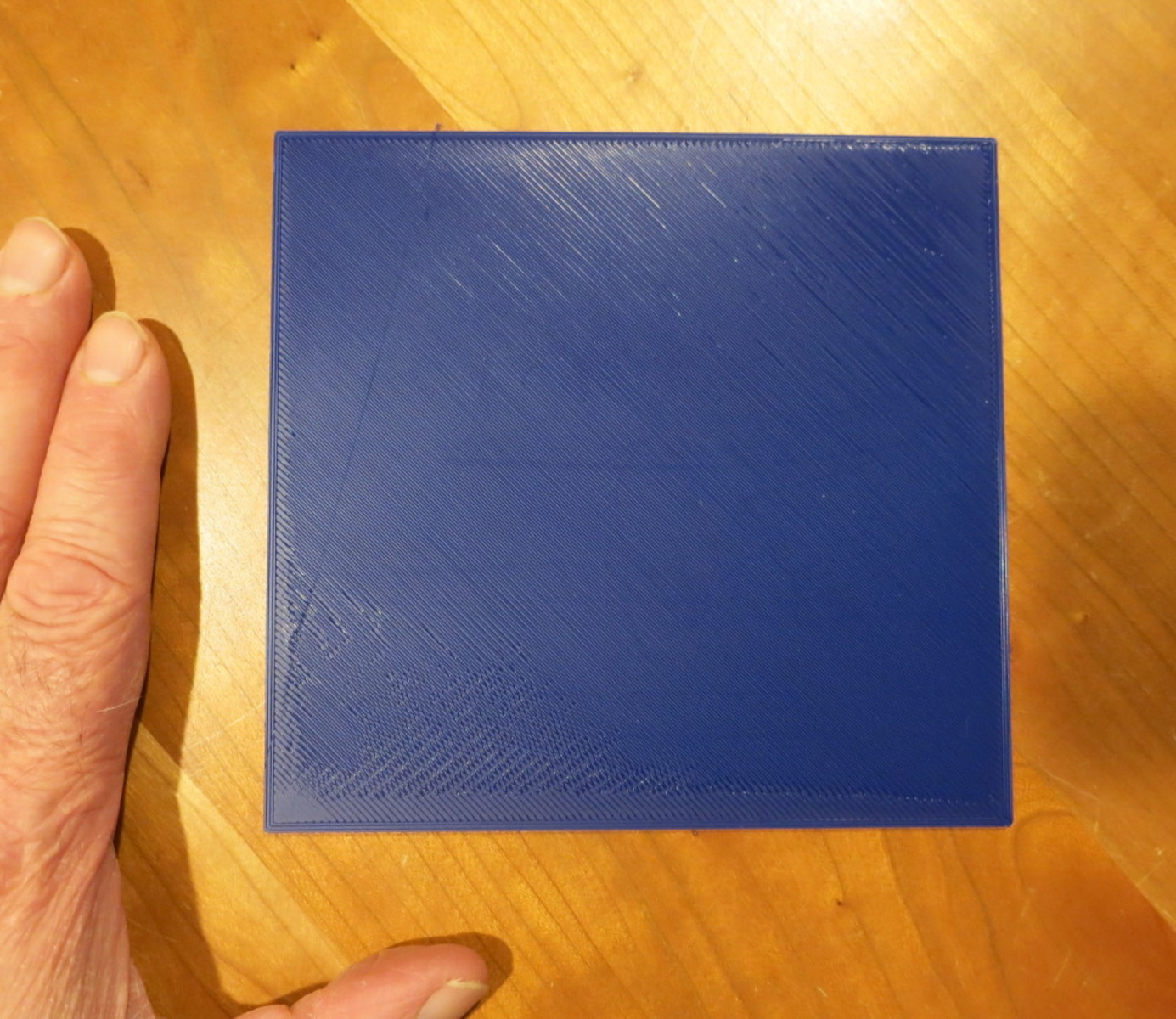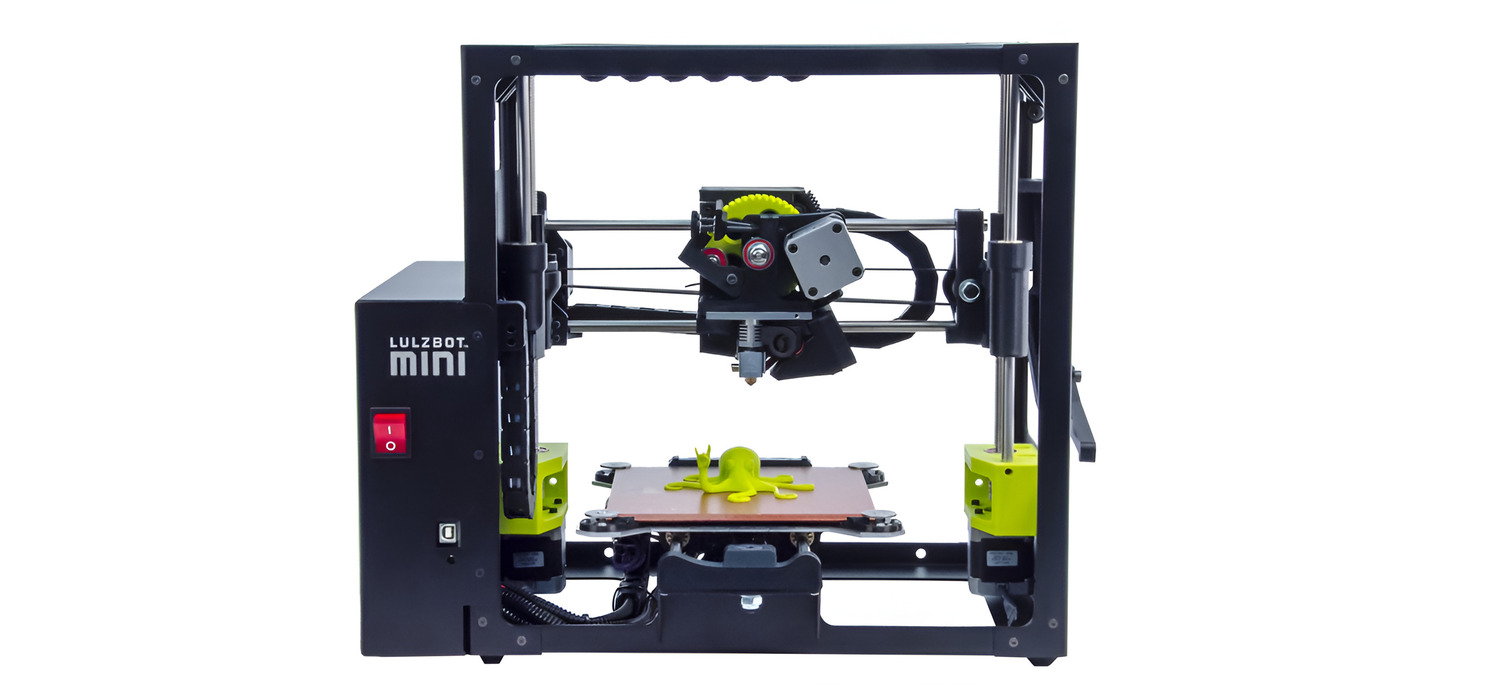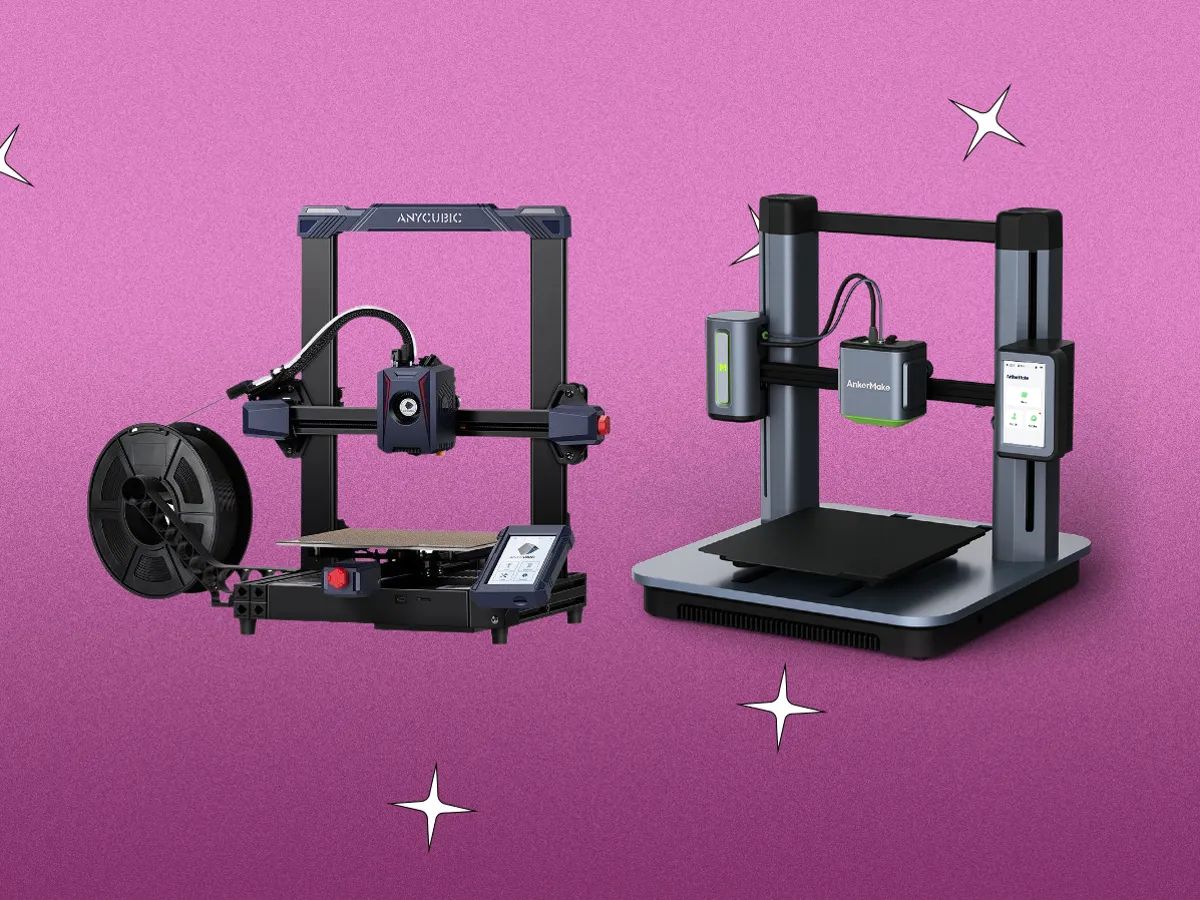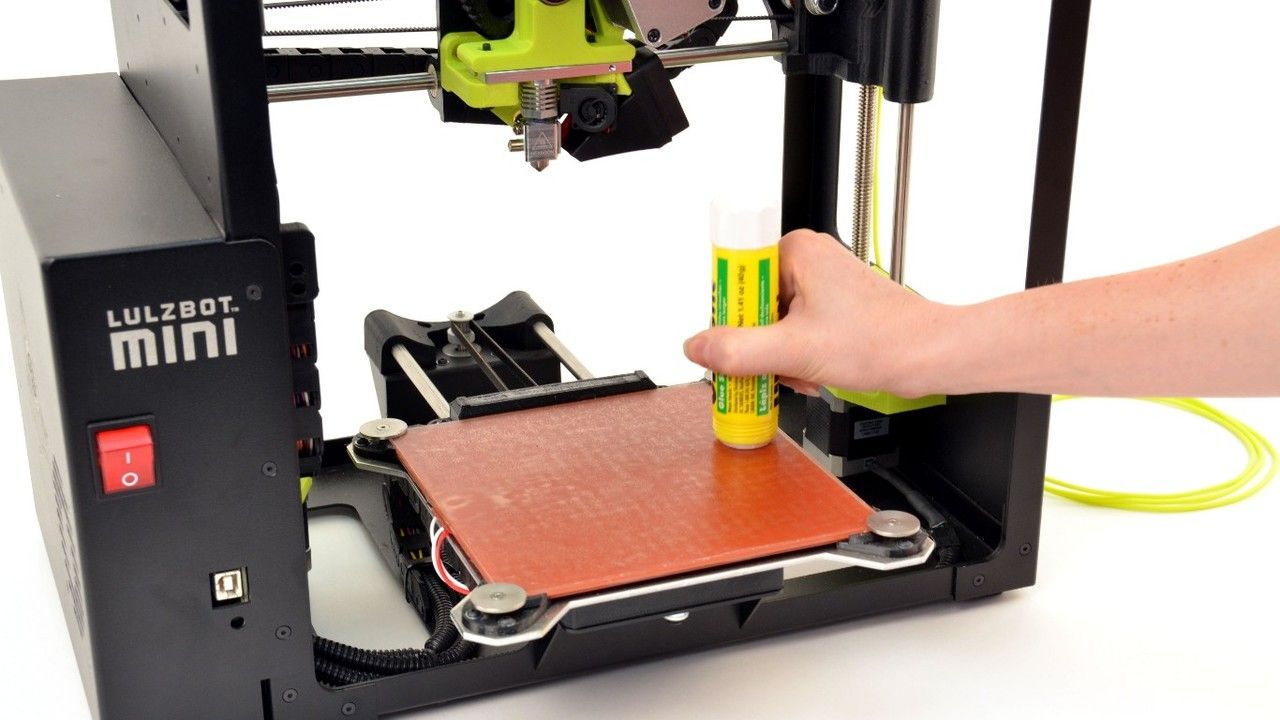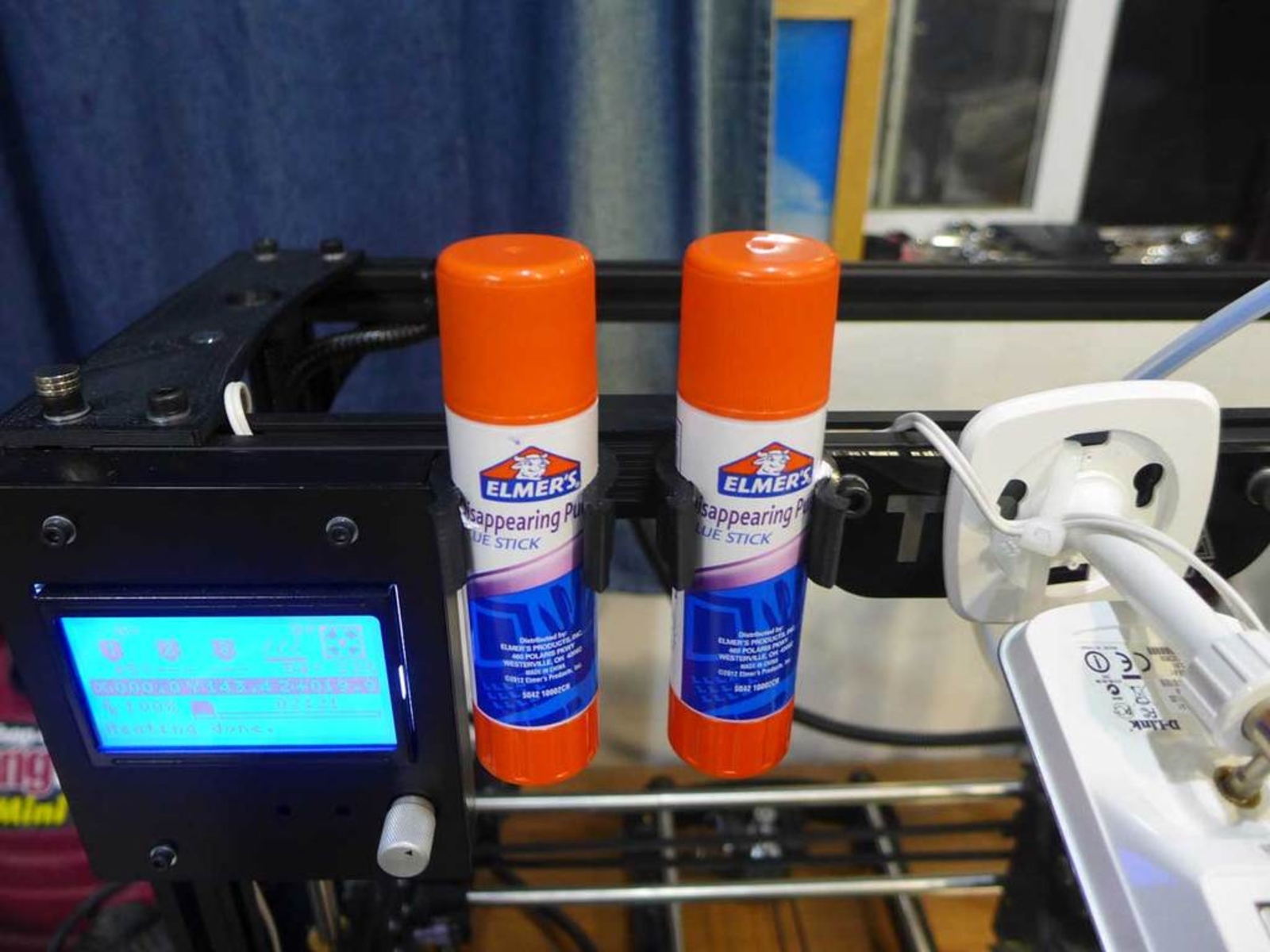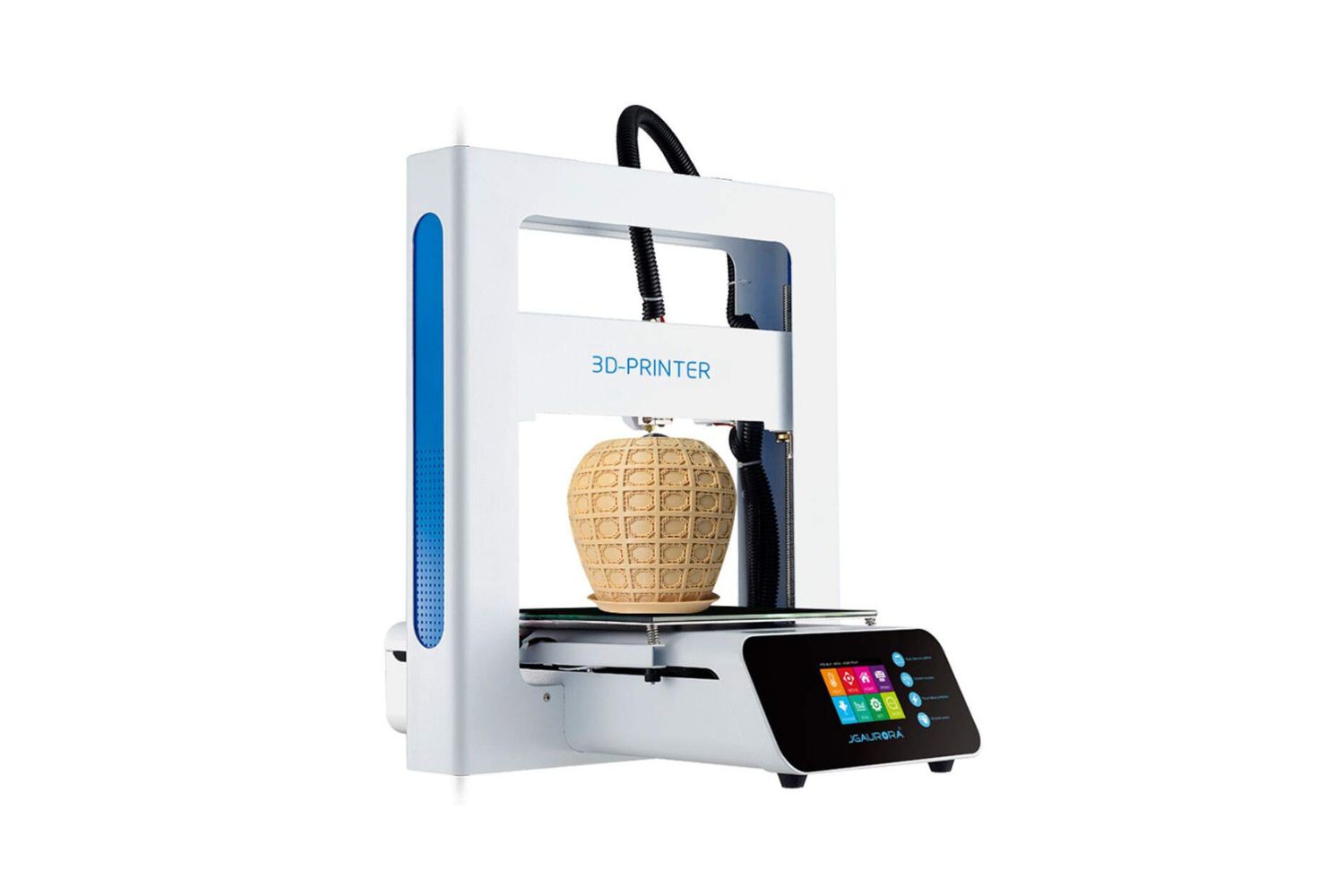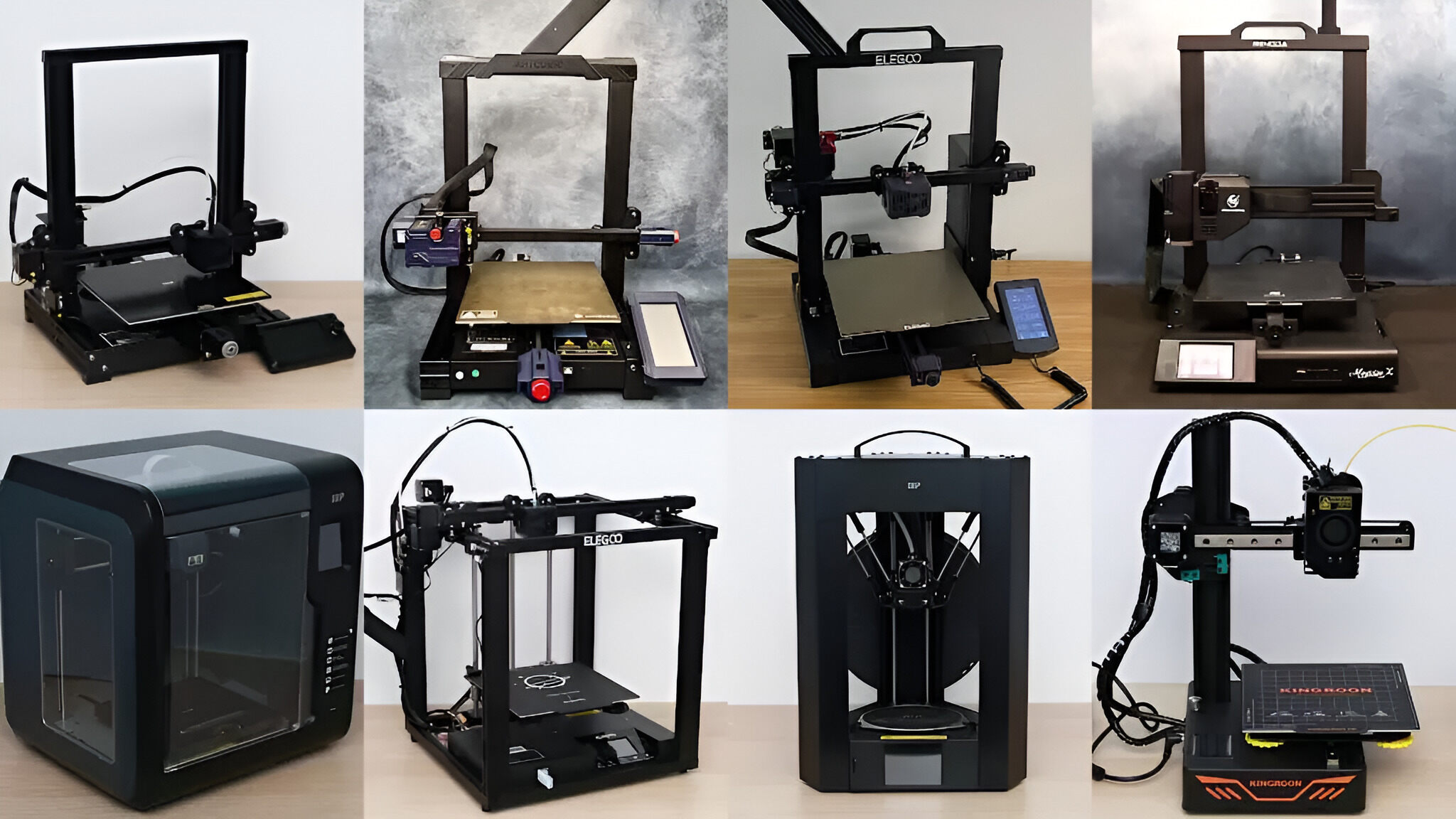Introduction
Welcome to the world of 3D printing, where technology has revolutionized the way we create and innovate. If you are considering investing in a 3D printer, you may have come across the term “glass bed”. But what exactly is a 3D printer with a glass bed, and why should you consider getting one?
A 3D printer with a glass bed is a printer that features a build plate made of glass. This glass bed serves as the foundation for your 3D prints, providing a smooth, flat surface for your creations to adhere to during the printing process. It offers several advantages over traditional build plates made of other materials such as metal or plastic.
In this article, we will explore the benefits of using a glass bed in your 3D printer. We will discuss how it improves adhesion, enhances print quality, expands material compatibility, increases durability, and simplifies the overall printing experience. By the end of this article, you will have a deeper understanding of why a 3D printer with a glass bed is a wise investment.
What is a 3D Printer with a Glass Bed?
A 3D printer with a glass bed is a type of 3D printer that incorporates a build plate made of glass. The glass bed serves as the surface on which 3D printed objects are created. It is designed to provide a smooth, flat, and stable foundation for the printing process.
The glass bed typically consists of a single sheet of tempered or borosilicate glass. Tempered glass is known for its strength and resistance to thermal stress, while borosilicate glass has excellent thermal conductivity. Both types of glass are popular choices for 3D printer beds due to their desirable properties.
One of the key advantages of a glass bed is its level and consistent surface. Unlike other materials that may warp or deform over time, glass remains flat and stable, ensuring accurate and reliable prints. Its smooth surface minimizes imperfections on the bottom layer of your prints, resulting in a better overall finish.
Additionally, glass beds often come with a special coating to further enhance adhesion. This coating, such as BuildTak or PEI (Polyetherimide), helps your prints stick to the bed during the printing process and prevents them from detaching prematurely. It provides a strong grip while still allowing for easy removal once the print is complete.
A 3D printer with a glass bed offers versatility in terms of compatible printing materials. Glass beds are compatible with a wide range of filament types, including PLA, ABS, PETG, TPU, and more. This allows you to experiment with different materials and achieve varying degrees of flexibility, strength, and durability in your prints.
Overall, a 3D printer with a glass bed provides a solid foundation for your 3D printing endeavors. Its level surface, enhanced adhesion, and compatibility with various materials make it an attractive choice for both hobbyists and professionals alike. Whether you are creating prototypes, functional parts, or artistic designs, a glass bed can help you achieve precise and high-quality prints.
Benefits of a Glass Bed
Investing in a 3D printer with a glass bed comes with a multitude of benefits that can enhance your overall 3D printing experience. Let’s explore some of the key advantages:
Improved Adhesion
A glass bed provides excellent adhesion for your 3D prints. The smooth surface combined with a specialized coating promotes strong bonding between the print and the bed. This reduces the chances of prints detaching or warping during the printing process, resulting in more successful and reliable prints.
Increased Print Quality
A key benefit of a glass bed is that it helps to improve the overall print quality. The flat and level surface ensures that the first layer of your print is properly aligned, leading to better layer adhesion and improved dimensional accuracy. This results in cleaner and more precise prints, with smoother surfaces and fewer imperfections.
Versatility in Printing Materials
A glass bed offers great compatibility with various types of filaments. Whether you’re working with standard PLA or more advanced materials like ABS or PETG, a glass bed can handle them all. This versatility allows you to explore different materials and take advantage of their unique properties, creating prints with varying levels of flexibility, strength, and durability.
Higher Durability and Longevity
Glass beds are known for their durability and longevity. Unlike other types of build plates that may warp or wear out over time, glass remains stable and maintains its flat surface. This means you won’t have to replace the bed as frequently, saving you time and money in the long run.
Ease of Use and Maintenance
Using a glass bed is incredibly convenient and low maintenance. It is easy to clean, usually requiring just a simple wipe-down with isopropyl alcohol or soapy water. And with proper care, a glass bed can last for a long time, providing consistent and reliable results with minimal effort.
In summary, a 3D printer with a glass bed offers improved adhesion, increased print quality, versatile material compatibility, higher durability, and ease of use and maintenance. These benefits make it an excellent choice for anyone looking to elevate their 3D printing capabilities and achieve exceptional results.
Improved Adhesion
One of the significant advantages of using a glass bed in your 3D printer is the improved adhesion it provides for your prints. The combination of a smooth glass surface and a specialized coating promotes strong bonding between the print and the bed, ensuring better adhesion throughout the printing process.
When using a glass bed, the first layer of your print sits firmly on the surface, reducing the chances of detachment or warping. This is especially beneficial when working with materials like ABS, which tends to shrink and warp as it cools. The improved adhesion on a glass bed helps to counteract these effects, resulting in more successful and reliable prints.
Furthermore, the specialized coatings often used on glass beds, such as BuildTak or PEI, enhance the adhesion even further. These coatings provide an extra layer of grip for the print, allowing it to firmly attach to the bed during the printing process. This is particularly helpful for prints with large footprints or intricate designs that require a strong hold throughout the entire print.
In addition to preventing detachment, a glass bed with improved adhesion also helps to reduce the occurrence of “elephant’s foot” – a common issue where the bottom layers of a print spread or bulge due to excessive heat and pressure. The smooth and level surface of the glass bed ensures that the first layer adheres evenly, resulting in more accurate dimensions and eliminating the need for excessive post-processing or sanding.
It is worth noting that achieving the optimal adhesion on a glass bed may require some experimentation and adjustments. Factors such as the bed temperature, nozzle distance, and filament type can affect the adhesion level. However, once you find the right settings, you can enjoy consistent and reliable adhesion for your prints.
Overall, the improved adhesion provided by a glass bed enhances the overall success rate of your prints. It reduces the chances of detachment and warping, resulting in more reliable and high-quality 3D prints. By utilizing a glass bed with its superior adhesion properties, you can confidently tackle complex designs and achieve excellent results.
Increased Print Quality
When it comes to 3D printing, achieving high print quality is a top priority for enthusiasts and professionals alike. Using a glass bed in your 3D printer can significantly contribute to improving the overall print quality, resulting in cleaner, more precise, and visually appealing prints.
One of the primary factors that affect print quality is the foundation on which the print is built. A glass bed offers a smooth and level surface, ensuring that the first layer of your print is properly aligned and adhered to the bed. This accuracy from the start sets the stage for the succeeding layers to be printed with the utmost precision.
The flatness of the glass bed eliminates any unevenness or imperfections that can occur with other materials, such as textured build plates or warped surfaces. This results in prints with smoother bottom surfaces, reducing the need for extensive post-processing and sanding.
Additive manufacturing relies on the layer-by-layer building process, and any inconsistencies in the first layer can impact the entire print. By providing a stable and even platform for the initial layer, a glass bed contributes to better layer adhesion, improving structural integrity and minimizing the risk of layer shifting or delamination.
Not only does a glass bed improve the overall dimensional accuracy of prints, but it also enhances fine details and intricate features. With a level surface, the printer can accurately reproduce the intricate geometries, resulting in crisp edges, sharp corners, and intricate details that are faithfully represented in the final print.
In addition, a glass bed allows for better control over bed temperature. Many 3D printers with glass beds have built-in heat distribution systems that ensure more uniform heating across the entire surface. This prevents localized temperature variations that can cause warping or defects in the print, resulting in consistent and high-quality prints.
The improved print quality achieved with a glass bed is not only visually appealing but also provides functional benefits. Whether you are printing functional prototypes or artistic designs, a glass bed helps to produce accurate, precise, and detailed prints that meet your expectations.
In summary, using a glass bed in your 3D printer contributes to increased print quality by providing a smooth and level surface, improving layer adhesion, enhancing fine details, and ensuring dimensional accuracy. By investing in a 3D printer with a glass bed, you can enjoy high-quality prints that showcase the full potential of your creations.
Versatility in Printing Materials
A major advantage of using a glass bed in your 3D printer is the versatility it offers when it comes to printing materials. Regardless of whether you prefer to work with standard filament types or more specialized materials, a glass bed can handle them all.
Glass beds are compatible with a wide range of filament materials, including popular options like PLA (polylactic acid), ABS (acrylonitrile butadiene styrene), PETG (polyethylene terephthalate glycol), and TPU (thermoplastic polyurethane). This compatibility allows you to experiment with different materials and harness their unique properties to create prints with varying levels of flexibility, strength, and durability.
PLA is a commonly used filament in 3D printing due to its ease of use and biodegradability. With a glass bed, PLA adheres well and produces clean prints with minimal warping or shrinking. The flatness of the glass bed ensures consistent and accurate layers, resulting in high-quality PLA prints.
If you prefer working with ABS, a material known for its strength and heat resistance, a glass bed can provide an optimal printing surface. ABS tends to shrink and warp during cooling, but the improved adhesion of a glass bed helps to counteract these effects and maintain the print’s dimensional stability.
PETG, a popular choice for functional and mechanical parts, also benefits from a glass bed. The clarity and smoothness of the glass surface result in prints with excellent transparency and a glossy finish. Additionally, PETG adheres well to the glass bed, allowing for reliable and accurate prints.
Furthermore, a glass bed can handle more advanced materials like TPU, a flexible and elastic filament often used for printing objects that require stretchability or impact resistance. The combination of a glass bed’s consistent surface and specialized coatings promotes strong adhesion for TPU prints, resulting in highly functional and durable objects.
The compatibility of a glass bed with various printing materials not only allows for greater creative freedom but also expands the possibilities for functional applications. Whether you’re creating intricate designs, mechanical components, or prototypes, a glass bed ensures that you can fully utilize the potential of different filaments to achieve your desired outcomes.
It’s worth noting that while a glass bed is versatile in terms of material compatibility, it’s still essential to adjust print settings and temperatures according to the specific filament being used. This customization ensures optimal adhesion and print quality for each material.
In summary, a 3D printer with a glass bed offers versatility in printing materials, accommodating a wide range of filaments and allowing for creative exploration. The glass bed’s compatibility with various materials empowers users to leverage the unique properties of different filaments to create prints with the desired flexibility, strength, and durability.
Higher Durability and Longevity
Investing in a 3D printer with a glass bed not only offers improved print quality and material versatility but also provides higher durability and longevity compared to other types of build plates. The durability of a glass bed is a result of the inherent properties of glass and its resistance to warping, wear, and thermal stress.
Glass is known for its excellent dimensional stability, meaning it maintains its flatness over time. Unlike build plates made of materials such as plastic or metal, which can warp or deform with frequent heating and cooling cycles, a glass bed remains stable and retains its shape, ensuring a consistently level surface for your prints.
Additionally, glass beds are designed to withstand the high temperatures typically involved in 3D printing. They can handle the heat without warping, softening, or deforming, which could negatively impact the quality and accuracy of your prints. The stability of the glass bed contributes to the longevity of the printer and reduces the need for frequent replacement.
Another advantage of using a glass bed is its resistance to abrasion and wear. Unlike textured or coated build plates that may degrade over time, the smooth surface of a glass bed withstands repeated use and remains relatively unaffected. With proper care, a glass bed can last for a considerable period, providing a reliable printing surface for numerous projects.
Furthermore, the durability of a glass bed translates to consistent print quality over time. As the bed remains flat and level, it ensures accurate layer adhesion and dimensional accuracy for your prints. This reliability is essential, especially when working on intricate or larger-scale projects that span multiple layers.
It’s worth noting that while glass beds are durable, they are not completely indestructible. It’s important to handle the glass bed with care, as rough handling or sudden impacts can cause breakage. However, when properly maintained and used with caution, a glass bed can offer extended durability and longevity for your 3D printing needs.
In summary, a 3D printer with a glass bed provides higher durability and longevity due to the inherent properties of glass. Its resistance to warping, wear, and thermal stress ensures a consistently level surface for prints and reduces the need for frequent replacement. The durability of a glass bed contributes to the overall quality and reliability of your 3D prints, allowing you to enjoy a prolonged and consistent printing experience.
Ease of Use and Maintenance
Using a 3D printer with a glass bed offers several advantages in terms of ease of use and maintenance, making the printing process more convenient and user-friendly. The following are some key points that highlight the ease of use and maintenance of a glass bed.
Simple Cleaning Process
Maintaining a glass bed is straightforward. With a smooth and nonporous surface, it can be easily cleaned by wiping it down with isopropyl alcohol or soapy water. Unlike textured or coated beds, there is no need for special cleaning solutions or techniques. This simplicity in cleaning saves time and effort, allowing users to quickly prepare the bed for the next print.
Compatibility with Easy Removal Techniques
A glass bed is designed to be compatible with various print removal techniques. Once a print is finished, it can be easily detached from the glass surface without causing damage. The smooth surface of the glass bed, combined with the use of specialized coatings like BuildTak or PEI, ensures strong adhesion during printing and easy removal once the print is complete. Users can confidently remove prints without struggling or risking damage to the print or the bed.
Durability and Longevity
Glass beds are known for their durability and longevity. Unlike other bed materials that may warp, degrade, or lose their adhesive properties over time, a glass bed maintains its stability and flatness. This reduces the need for frequent recalibration and replacement, providing users with a reliable printing platform for an extended period.
Consistent and Level Printing Surface
A glass bed’s level and consistent surface contribute to simplified bed leveling and calibration processes. The flatness of the bed ensures that the nozzle distance is uniform across the entire print area, resulting in consistent print quality and dimensional accuracy. This eliminates the need for constant adjustments and fine-tuning, making the setup process more efficient and user-friendly.
Versatile Bed Temperature Control
Glass beds are compatible with various bed temperature settings, allowing users to experiment with different filament types and optimize their printing conditions. The temperature control is often more precise and consistent compared to other materials, enabling users to achieve the desired bed temperature for optimal print adhesion without excessive trial and error.
Overall, a 3D printer with a glass bed offers ease of use and maintenance. With a straightforward cleaning process, easy print removal, durability, consistent surface, and versatile temperature control, users can enjoy a hassle-free printing experience and spend more time focusing on their designs and creations.
Conclusion
A 3D printer with a glass bed is a wise investment for anyone looking to enhance their 3D printing experience. The benefits of using a glass bed, such as improved adhesion, increased print quality, versatility in printing materials, higher durability, and ease of use and maintenance, make it an attractive choice for both hobbyists and professionals.
The improved adhesion provided by a glass bed ensures that your prints adhere firmly to the bed, reducing the chances of detachment or warping. This results in more successful and reliable prints. Additionally, the smooth and level surface of a glass bed contributes to increased print quality by providing a stable foundation for precise layer adhesion and accurate dimensional accuracy.
A glass bed offers versatility in printing materials, accommodating a wide range of filaments and allowing for creative exploration. From standard PLA to advanced materials like ABS, PETG, and TPU, a glass bed can handle it all, giving you the freedom to experiment and achieve the desired properties in your prints.
Furthermore, a glass bed is known for its durability and longevity. Its resistance to warping, wear, and thermal stress ensures a flat and stable surface for extended periods. This reduces the need for frequent recalibration and replacement, providing a reliable printing platform for your projects.
Lastly, a glass bed offers ease of use and maintenance. With a simple cleaning process, compatibility with easy print removal techniques, and a consistent printing surface, users can enjoy a hassle-free printing experience. The versatility in bed temperature control adds to the convenience by allowing users to optimize printing conditions for different filament types.
In conclusion, a 3D printer with a glass bed provides numerous advantages that enhance the overall 3D printing experience. From improved adhesion to increased print quality, versatility in materials, durability, and ease of use and maintenance, a glass bed is a valuable addition to any printing setup. Whether you’re a beginner or an experienced user, investing in a 3D printer with a glass bed will undoubtedly elevate your printing capabilities and help you achieve outstanding results.









